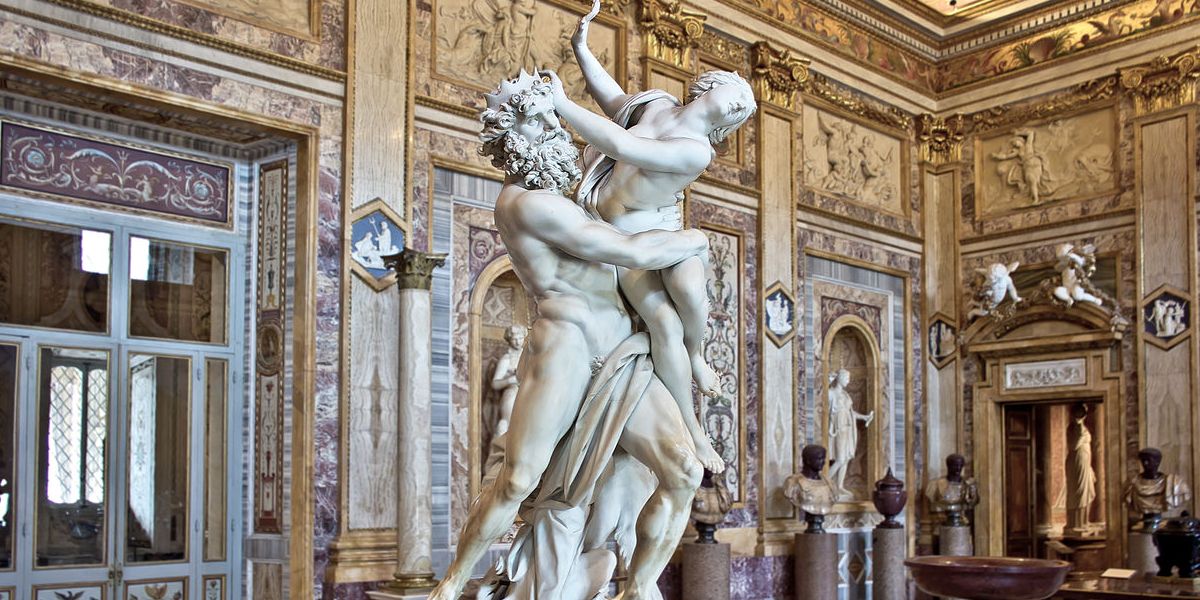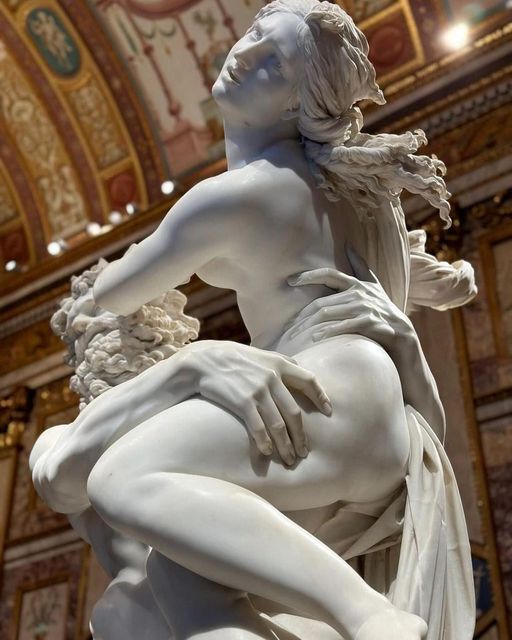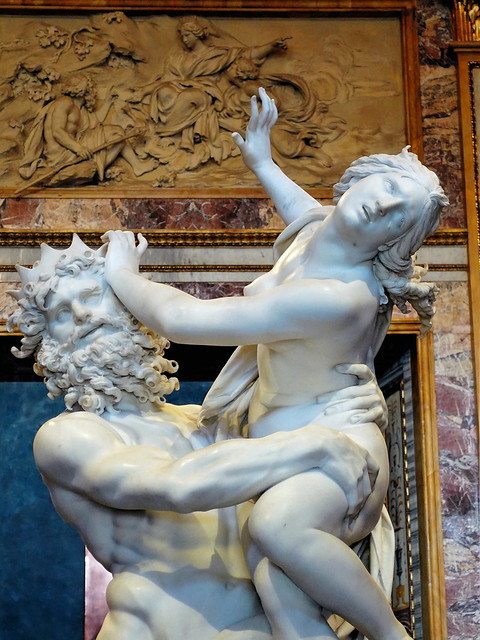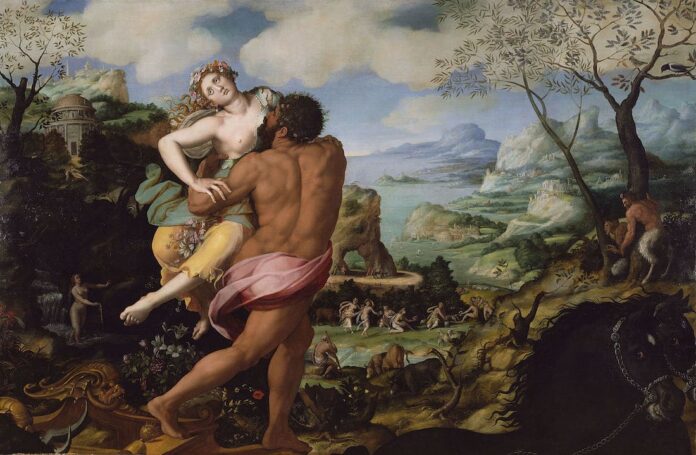The Rape of Proserpina, more accurately translated as the Abduction of Proserpina, stands as a testament to the extraordinary skill and visionary artistry of Gian Lorenzo Bernini. Created between 1621 and 1622, this magnificent Baroque marble sculpture captures the dramatic moment when Proserpina is forcibly taken to the underworld by Pluto, the god of the underworld. Completed when Bernini was just 23 years old, the work is a remarkable achievement that showcases the young sculptor’s prodigious talent and profound understanding of human anatomy and emotion.

Historical and Mythological Context
The myth of Proserpina (known as Persephone in Greek mythology) and Pluto (Hades in Greek mythology) is a poignant tale that explores themes of love, loss, and the changing seasons. According to the myth, Proserpina, the daughter of Ceres (Demeter), the goddess of agriculture, is abducted by Pluto and taken to the underworld to be his bride. Ceres’ grief at her daughter’s disappearance causes the earth to become barren. Eventually, a compromise is reached where Proserpina spends part of the year with her mother, bringing spring and summer, and the rest with Pluto, resulting in autumn and winter.

Artistic Composition and Technique
Bernini’s sculpture captures the intense drama and emotion of this mythological episode. The group features Pluto grasping Proserpina with one arm while the other lifts her off the ground. The sense of movement is palpable, as Pluto’s muscular form contrasts with Proserpina’s softer, struggling body. The detail in the sculpture is exquisite, from the tension in Proserpina’s outstretched hand to the indentations where Pluto’s fingers press into her flesh, showcasing Bernini’s unparalleled ability to render marble with lifelike realism.

Cerberus, the three-headed guard dog of the underworld, is also included in the composition, symbolizing the boundary between the worlds of the living and the dead. The presence of Cerberus not only adds to the narrative but also balances the composition, grounding the dynamic figures of Pluto and Proserpina.
Baroque Style and Influence
The Rape of Proserpina is a quintessential example of Baroque art, characterized by its dramatic intensity, emotional depth, and dynamic movement. Bernini’s work goes beyond the physical representation of the myth, capturing the psychological struggle and raw emotions of the characters. This ability to evoke emotion and tell a story through sculpture was a hallmark of Bernini’s style and contributed significantly to the development of Baroque art.

Bernini’s innovative approach to composition and his skillful manipulation of marble influenced many artists of his time and beyond. His ability to create a sense of movement and bring his subjects to life had a lasting impact on the art world, solidifying his reputation as one of the greatest sculptors of all time.
Legacy and Reception
Since its creation, The Rape of Proserpina has been celebrated as a masterpiece of Baroque sculpture. It remains a key attraction at the Galleria Borghese in Rome, where it continues to captivate visitors with its breathtaking realism and emotional power. Art historians and critics have lauded the work for its technical brilliance and its ability to convey complex human emotions through the medium of marble.
In conclusion, The Rape of Proserpina is not merely a depiction of a mythological event; it is a profound exploration of human emotion, power, and vulnerability. Bernini’s masterful execution and innovative artistic vision make this sculpture a timeless piece that continues to inspire awe and admiration centuries after its creation.




